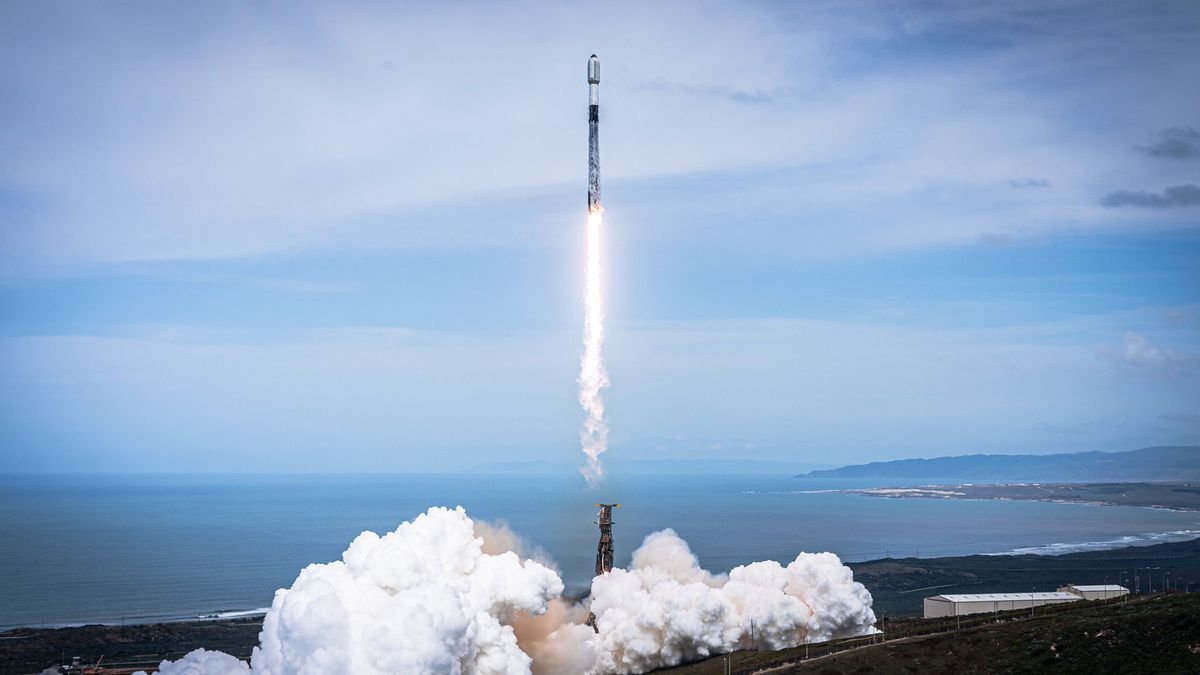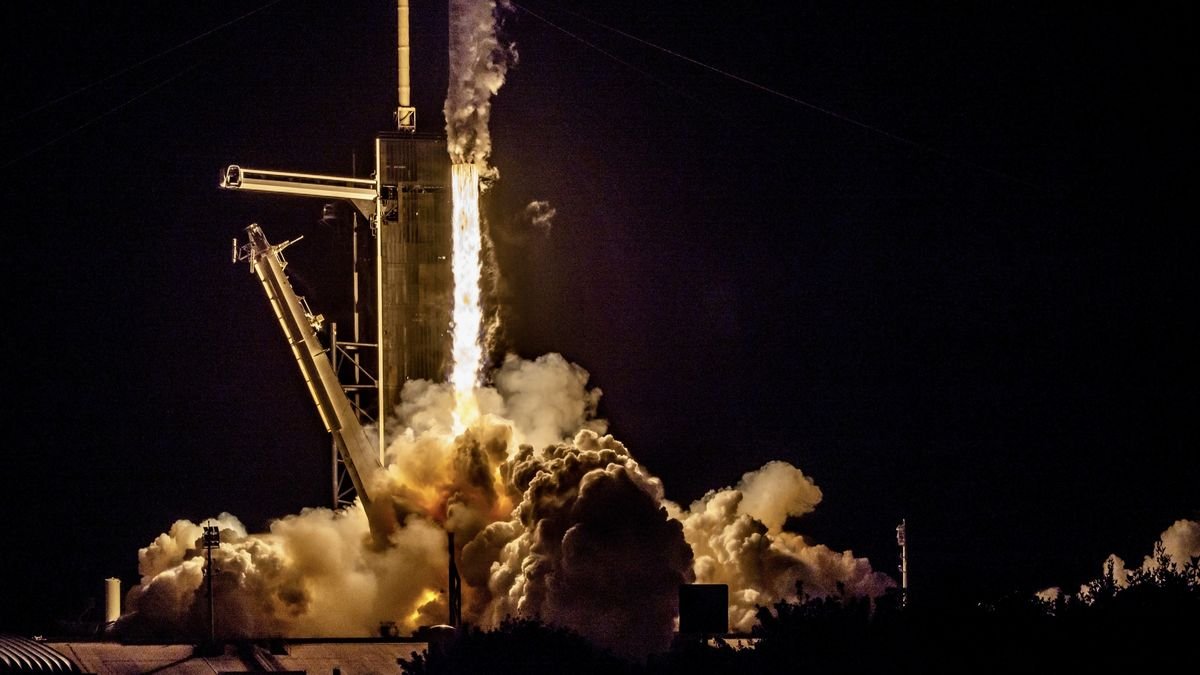By April 2020, more than two billion people were under some form of lockdown to prevent the spread of SARS-CoV-2.1 As restaurants, sports stadiums, and concert venues closed, people increasingly turned to home-based activities: tending to sourdough starters, cultivating houseplants, and playing video games—lots and lots of video games.2
That same month, a new feature appeared in the massively popular game Borderlands 3: an arcade booth tucked neatly into a corner of Sanctuary III, the spaceship that players use to traverse the galaxy. At the arcade game-within-a-game, players solve simple puzzles by aligning sequences of colored tiles, a setup somewhat reminiscent of Candy Crush. But the minigame’s apparent simplicity is deceptive; it is the result of years of collaboration between game designers and scientists and has become one of the most successful citizen scientist projects ever created.
Players curated genomic data by solving mini puzzles made of colored tiles.
The Gearbox Entertainment Company

In a paper published in Nature Biotechnology, the team analyzed data collected from millions of players that engaged with the Borderlands Science project.3 Their efforts helped scientists assess evolutionary relationships between bacterial species in an enormous dataset of human gut microbes, informing future explorations into the roles of these microbes in health and disease.
“I think it’s a brilliant approach,” said Amy Sterling, who was not involved in the Borderlands Science project. Sterling is a veteran in the crowd-sourced science space; she has served as the executive director of Eyewire, a long-running citizen science game for mapping neural circuits, since 2012.4 “We know that games have myriad impacts on humans, some good and some bad, but putting citizen science in a game like Borderlands—there’s arguably no downside to that, it’s a win for everyone.”

Jérôme Waldispühl engages citizen scientists to help construct microbial phylogenetic trees.
Attila Szantner
Like many scientific endeavours, this one began with a problem, said Jérôme Waldispühl, a computational biologist at McGill University and coauthor of the study. “There is a fundamental problem that we have in biology, which is the problem of multiple sequence alignment (MSA). Basically, this is the process of comparing DNA sequences from different organisms to better understand the phylogeny and how they relate to each other.”
While MSA computer programs have improved over the past few decades, they still require human supervision, said Waldispühl. As organisms diverge, their DNA changes in different and unpredictable ways. Nucleotides can be inserted, deleted, or swapped for a different type of nucleotide and there aren’t necessarily hard-and-fast rules that computers can follow to figure out how to match up the mutated sequences. However, the unexplainable black box of the human mind is often able to intuit the optimal alignment and correct the computer’s mistakes.
“The truth is that there’s no real rule for doing this,” said Waldispühl. “Often, it’s about looking at the pattern, the context in which a mutation or an insertion or deletion occurs. It’s relying on the aesthetic of the alignment.” While human curation of these datasets is important, it’s also incredibly time consuming, causing a major bottleneck in the research pipeline.
“We needed to figure out how to integrate the human mind into the computing process at scale,” said Waldispühl.
In 2010, Waldispühl and his research team launched Phylo, a crowd-sourced, lightly gamified online program that allowed anyone to contribute to MSA curation. Phylo achieved modest success, gaining nearly 36,000 registered users in its first five years.5
“Very soon, however, it became apparent for us that even if we were one of the most successful citizen science projects in the world, the engagement and the volume of participation were not nearly enough to solve the type of problems that we are interested in,” he said.

Attila Szantner founded Massively Multiplayer Online Science to bring together science and video games.
Nicolas Righetti
Waldispühl was not the only person considering the issue of engagement in citizen science. In 2014, computer scientist and study coauthor Attila Szantner cofounded the company Massively Multiplayer Online Science with the aim of bringing crowd-sourced science into video games. Two years later, Waldispühl and Szantner teamed up and, along with Gearbox Entertainment, the company behind Borderlands, began the lengthy process of designing the Borderlands Science project.
The team knew that they wanted to address the MSA problem, but they still needed to find a sufficiently large data set to analyze. Fortunately, the researchers behind the University of California, San Diego’s Microsetta Initiative, a microbiome sequencing study performed using “donations” from thousands of volunteers, were willing to share their data. The resulting dataset contains nearly one million 16S ribosomal RNA sequences, which serve as rough taxonomic markers for different species of bacteria.
Daniel McDonald, the initiative’s scientific director and coauthor of the study, said that construction of the phylogenies of these diverse populations is more than just an idle curiosity. “Once we can estimate a phylogeny, we can use this relationship information to help us understand how diverse a microbiome sample is—for example, is your microbiome more diverse than my microbiome? And we can look at this in the context of the evolution that’s represented.”
Researchers can also gain valuable insights by performing these assessments across all the samples. “We’ve found that in the microbiome space, using phylogeny tends to be much more informative and powerful for teasing apart subtle differences in humans that we can ultimately relate back to things like health and lifestyle and diet,” said McDonald.
Borderlands Science launched on April 7, 2020. The team had considered postponing given that the world’s attention seemed to be elsewhere as global COVID-19 cases hit one million and kept climbing. However, almost immediately following the launch, they realized that the project would be a massive success.
“That single day when we launched this feature inside Borderlands 3, we collected five times more data than during the 10 years that Jérôme was running [Phylo],” said Szantner. “This is the kind of crazy power and resources that players bring to scientific research.”
The team walked a fine line between creating a game that was fun and engaging and ensuring that players’ contributions were still scientifically relevant. Ultimately, they succeeded on both counts. Players were highly engaged in the game—since the launch, more than four million people have participated in the initiative, solving more than 135 million RNA mini puzzles.3 Their involvement also contributed to scientific understanding: curation of MSA algorithm output by Borderlands Science players improved phylogenetic tree structure compared to MSA algorithms used alone.
“There are different reasons why we might want to involve a crowd in scientific research,” said Marion Poetz, who studies innovation in science at the Copenhagen Business School and who was not involved in the project. “One of them is to leverage volume to improve efficiency. In this case—it’s impressive—millions of people have done something that researchers probably would need thousands of years to complete.”
Sterling was similarly impressed by the scale of the project and hopes that other video game manufacturers will follow suit. “I could imagine a future where it’s just a part of corporate social responsibility for these huge game studios to launch a new citizen science project every year as a way of proving to the world that games give back,” she said.
However, Poetz said that citizen science projects can have other goals that don’t necessarily have anything to do with the data. These include improving science literacy, changing attitudes about science, and democratizing the scientific process. Embedding a citizen science project within a video game not only vastly expands the project’s reach—more than three billion people around the world play some form of video games—it also increases the diversity of the players.6
“I think that is the special thing here,” Poetz said. “There are data showing that certain types of people contribute to crowd science projects; they’re more likely to be white, well-educated, and so forth. By embedding this particular project in a video game, it may reach people that usually would not go on Zooniverse or other crowd science platforms.”
Poetz noted that while this project had clearly succeeded in reaching a wide audience, many of whom may not have otherwise been scientifically inclined, she would have been interested to learn whether the team had specifically pursued any non-scientific goals, the approaches they had used in pursuit of these goals, and the metrics they used to determine the outcomes of these efforts.
Waldispühl said that while the non-scientific impacts of the project were not initially a major focus, he has come to appreciate that they are an important and valuable element. “Initially, I was approaching this as a computational problem; I wanted to make computers smarter than they are now,” he said. “But eventually, what I found fantastic was the feedback from players.”
“Many people divert away from science because of social pressure, or people telling them they’re not smart enough. With this game, we are noticing many people really engaging in the scientific process. And by doing this, they’ve realized that they can do things they never thought they could do and they’ve realized that science is fun,” Waldispühl continued.
“We are trying to infuse society with this feeling that science is good,” he said. “Ultimately, we want to inspire people, to fight disinformation, and reinforce public trust in science, which I think is a real game changer going beyond the scientific results themselves.”
References
- Koh D. COVID-19 lockdowns throughout the world. Occup Med. 2020;70(5):322.
- DiFrancisco-Donoghue J, et al. Gaming in pandemic times: An international survey assessing the effects of COVID-19 lockdowns on young video gamers’ health. Int J Environ Res Public Health. 2023;20(19):6855.
- Sarrazin-Gendron R, et al. Improving microbial phylogeny with citizen science within a mass-market video game. Nat Biotechnol. 38622344.
- Kim JS, et al. Space-time wiring specificity supports direction selectivity in the retina. Nature. 2014;509(7500):331-336.
- Singh A, et al. Lessons from an online massive genomics computer game. Proc AAAI HCOMP. 2017;5:177-186.
- Morikawa Y. The gaming industry sees a staggering surge in popularity. GlobalEDGE, Michigan State University. https://globaledge.msu.edu/blog/post/57295/the-gaming-industry-sees-a-staggering-surge-in-popularity










